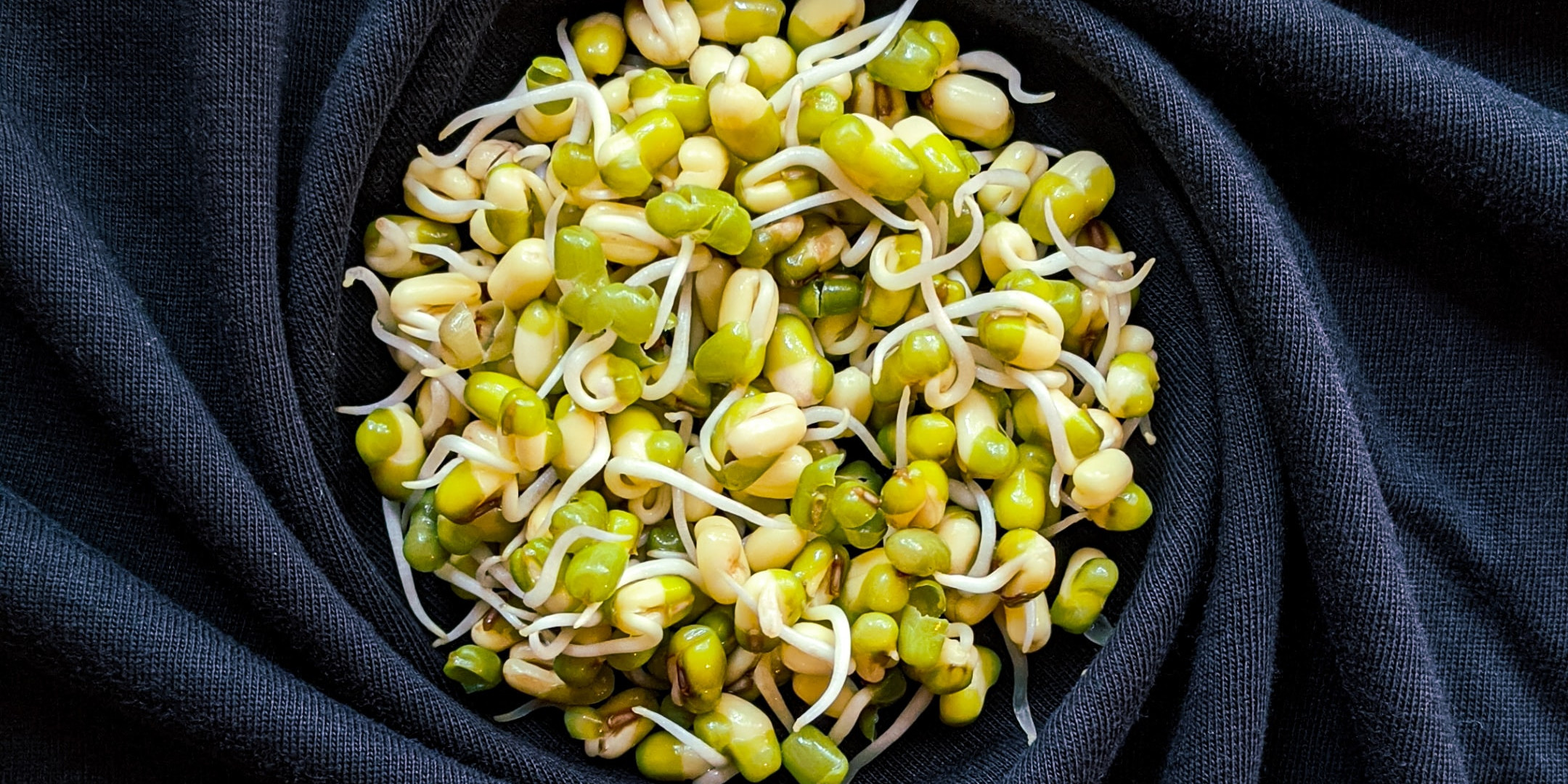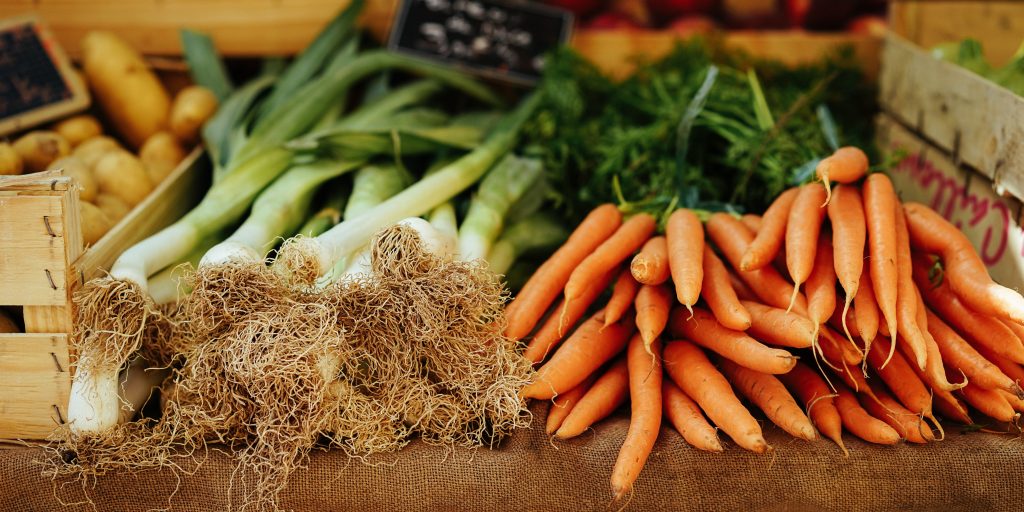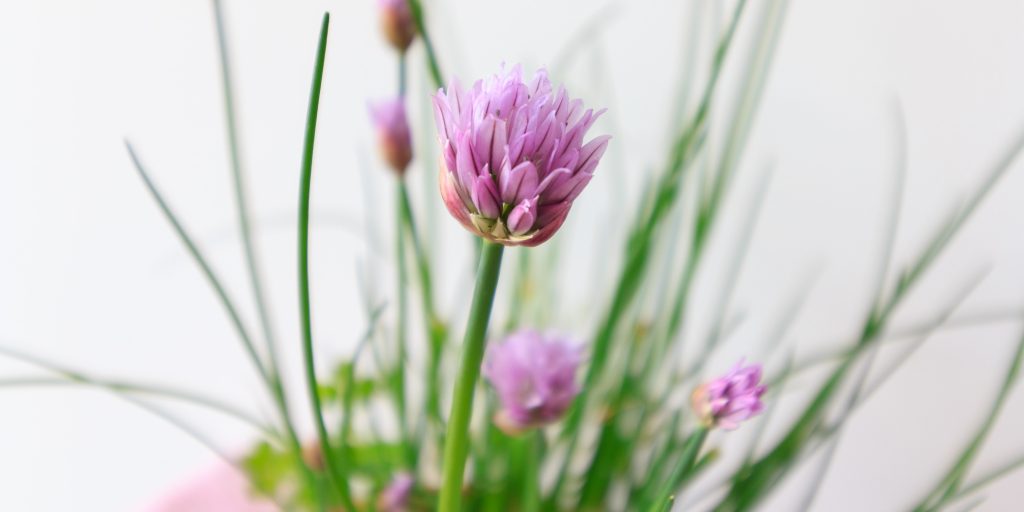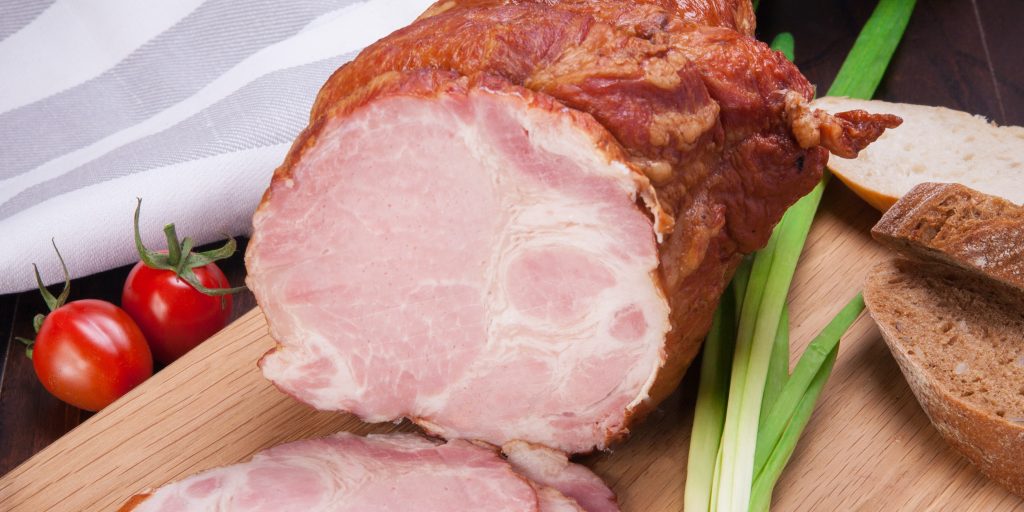
Sprouting seeds indoors is the hands down easiest way to grow some nutrition at home. Learning how to sprout is easy, and it takes minimal time, effort, space, and no soil.
Sprouts are baby greens, only a few days old. The seeds have just germinated and begun to develop their first stems and leaves. They are typically only a few inches long.
Sprouts and microgreens are similar, but microgreens grow a bit more and are grown in the soil. Sprouts take less time, are crunchier, but not as flavorful as microgreens.
While you can find sprouts at the grocery store, you can learn to sprout at home. When you sprout at home, you control the cleanliness, the freshness, and the types of seeds you sprout. Anyone can do it!
Once you learn how to sprout, you will be able to enjoy vegetables that you have grown at home, no matter where you live!
Why Learn How to Sprout?
Fresh sprouts contain a lot of health benefits. They have more protein, and are more digestible because their anti-nutrients have been reduced. They have higher nutrient and antioxidant amounts as well.
Sprouts have been shown to lower blood sugar and improve cholesterol levels in diabetics. They may have anti-cancer benefits as well.
Unfortunately, those delicious and nutritious sprouts have a downside… salmonella and e. coli. Commercially produced sprouts are easily contaminated and thus not safe to eat.
Sprouting at home means you can eliminate bacteria in your sprouts. You control the seeds, the cleanliness of your equipment, how much air your sprouts get, and how long before harvesting them.
If you want to eat sprouts raw, knowing how to sprout will protect you from problematic bacteria.
Grocery store sprouts don’t have a lot of variety and aren’t as fresh as ones you grow yourself. If you want to eat sprouts regularly, you need to grow them yourselves.
The great thing about growing your own is that it is so easy to do at home. Whatever the season, wherever you live, you can grow sprouts inside in a few days. There is no long term commitment!
In addition, you can learn how to sprout grains and use them as sprouted flour in baked goods.
Sprouts are a delicious and nutritious way that you can grow your own vegetables at home, no matter what your limitations might be. To enjoy the most variety and freshness, growing your own is the only option.
How to Sprout
All sprouting requires is a mason jar and some cheesecloth. You can buy purpose built sprouters, or attachments for your mason jar, but you don’t have to.
The goal of sprouting is to keep the seeds humid for a few days until they sprout, then you can eat them. Cloth or some type of screen allows you to keep the seeds moist, while protecting them from bugs and making it easy to strain the sprouts.
Take your seeds and soak them overnight. Drain in the morning, and then twice a day rinse your seeds. In two to three days (sometimes more, depending on the seed), you’ll have nutritious sprouts to enjoy.
Almost any legume, seed or nut can be sprouted. It’s best to buy seeds meant for sprouting, as others may have been irradiated to stop sprouting on the shelves, or have not been cleaned to avoid harmful bacteria.
What to Sprout?
Sprouts can be classified into four categories. Bean and pea, vegetable, nut and seed, and grains.
Bean and pea sprouts include mung beans (which is the most common grocery store sprout), lentils, peas, and other beans.
Kidney beans have toxins that may cause nausea, vomiting, or diarrhea, so avoid sprouting them for raw eating. Cooked sprouted kidney beans should be fine.
Vegetable sprouts are made from broccoli, alfalfa, mustard, and clover seeds. Radish, herbs, lettuces, there are lots of vegetable sprout options available.
Nuts and seeds means seeds like pumpkin, sunflower, or sesame. Peanuts can sprout. Chia and flax have mucilage, so they are tricky to sprout properly.
Whole grains can be sprouted. Barley, wheat, and rye are some examples. You can sprout the grains, dry them, and grind into flour for baking as well.
There are many sources for seeds for sprouting out there. They will offer seeds that will be clean, so you don’t have to worry about e. coli or salmonella.
Seeds for gardening or for bird food are more likely to be contaminated with bacteria. They should sprout, but even a tiny amount of bacteria can grow rapidly. Sprouting conditions are perfect for nasty bacteria.
Using Sprouts
Sprouts can be delicious as snacks! They can add a delicious crunch to sandwiches or salads. You might use them as the whole base of a salad.
Sprouts can be added to stir fries, and are often ingredients in Asian dishes. Pad Thai uses bean sprouts, and they can be added to make delicious Bibimbap.
Try using sprouted beans in bean soups. They may cook faster, and may be more digestible for those who are sensitive to beans.
Some put their sprouts in smoothies, or add them to eggs.
Different sprouts have different flavors. Try different types, and see which you prefer. You may like some raw, and others added to recipes you enjoy.
This winter, you too can enjoy your own fresh vegetables. Order some sprout seeds and enjoy some delicious sprouts!





